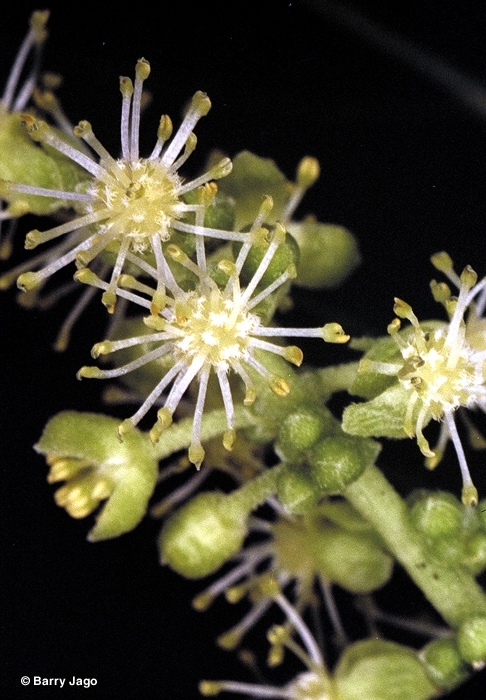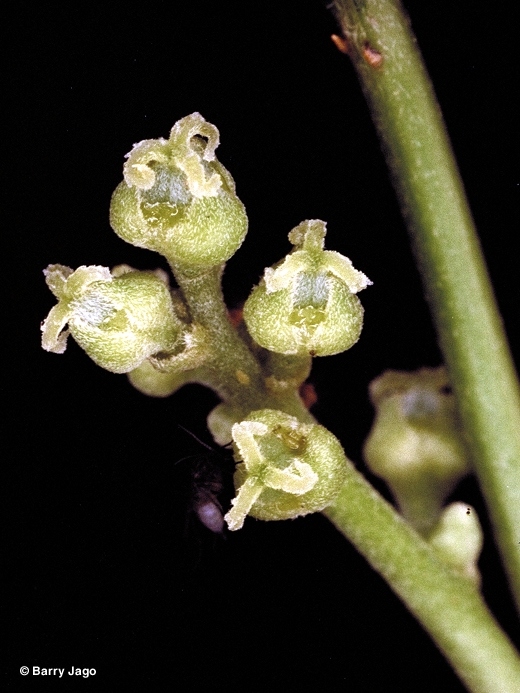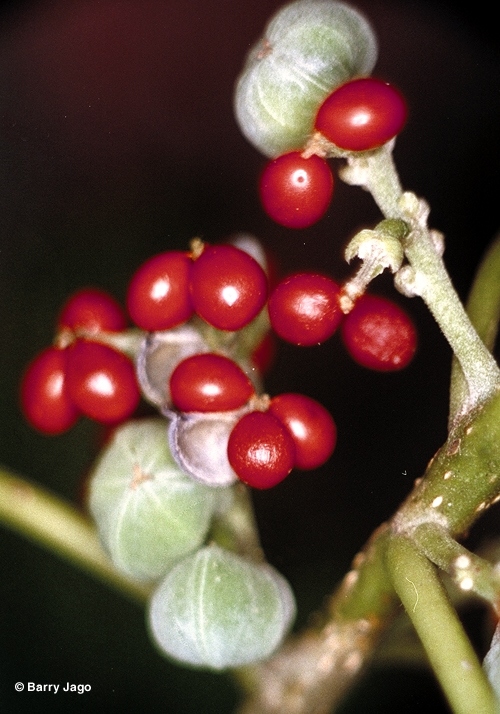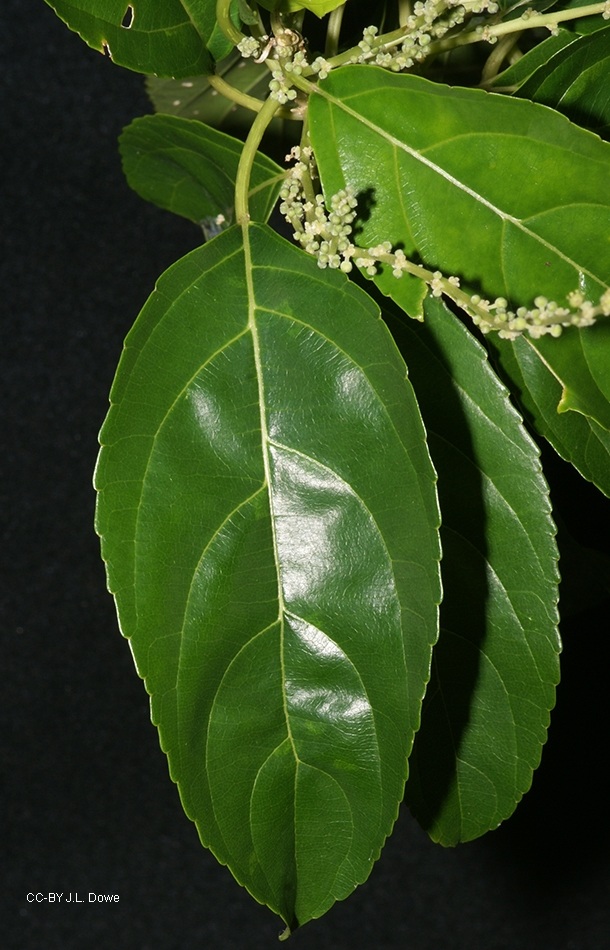Australian Tropical Rainforest Plants - Online edition
Claoxylon tenerifolium subsp. boreale P.I.Forst.




Forster, P.I. (2007) Austrobaileya 7(3): 466. Type: Australia, Queensland, Cook District: State Forest 143, South Mary Logging Area, 21 km along Mt Lewis road, 1 November 2001, P.I.Forster 27700 (holo: BRI; iso: A, BISH, DNA, L, MEL, MO, NSW, Z ).
Queensland Brittlewood; Claoxylon
Hard yellowish or orange layers often present in the blaze. Blaze odour apparent, difficult to describe but usually unpleasant. Cambial layer may turn purplish on exposure.
Oil dots visible with a lens. Usually 2 small raised glands present on the upper side of the petiole at its junction with the leaf blade. Leaf blades about 3-15 x 1-15 cm. Petiole narrowly grooved on the upper surface, 13-38 mm x 0.8 x 1.0 mm, scattered to dense indumentum. Domatia absent. Pale circular or slightly elongated lenticels normally visible on the twigs. Stipules very small.
Inflorescences axillary, up to 130 mm long. Flowers with dense indumentum. Male and female flowers about 2 mm diam. Anthers shaped like a cloven hoof with the two anther sacs joined only towards the base; bases of the staminal filaments surrounded by numerous glabrous 'glands'. Ovary with dense indumentum.
Occurs in CYP and NEQ, and in the northern part of CEQ. Grows on the margins of wet rainforest on substrates derived from basalt, granite or metamorphic rock. Altitudinal range from 200 to 1200 m.





